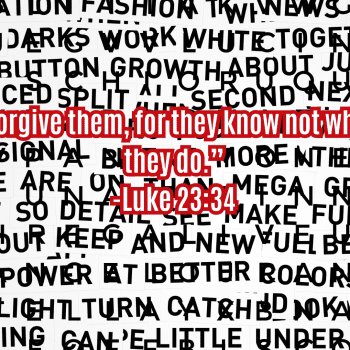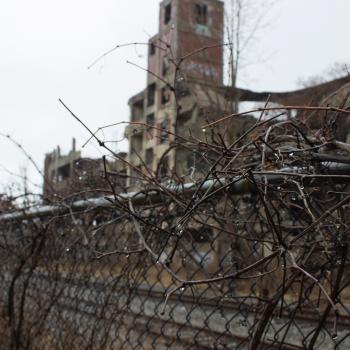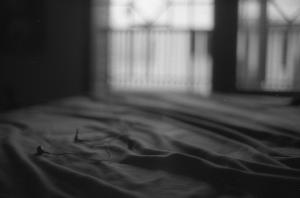 I was standing with a Palestinian Muslim and three Jews. Jericho. The ancient city. Some say Jericho is the oldest continuously inhabited city in the world. Others say that distinction belongs to one of the cities in Egypt, or Syria, or Turkey.
I was standing with a Palestinian Muslim and three Jews. Jericho. The ancient city. Some say Jericho is the oldest continuously inhabited city in the world. Others say that distinction belongs to one of the cities in Egypt, or Syria, or Turkey.
Either way, the old city of Jericho is astoundingly old. Settlement activity dating back to 10,000 BC. The further you look down into the archeological pits of Jericho, the further back in time you’re looking.
You travel the eons just by glancing. We peered down into the dirt pit before us. It went thirty or forty feet down.
Previous days in Jerusalem had been chilly, a cold wind blowing at night. But here on the plain, below sea level, a stone’s throw, more or less, from the Dead Sea, it was dusty and hot. There is no refuge from the sun when you are standing on the earthen mound, the pile of dirt and stone that once was Jericho.
You look out across the plain and you see the houses of the modern town below, cheap houses built hastily to hold the collection of Palestinians who’ve piled into the place over the decades. Jericho is governed by the Palestinian Authority right now. But it is also still under Israeli military occupation.
My new Palestinian friend grabbed my hand, holding it, and pointed to an area of houses along a ridge to the west. I’d forgotten about this phenomenon, something I’d experienced years ago in Bulgaria and in Turkey, men walking hand in hand, arm in arm. He pointed again. That’s the refugee housing, he said, the refugee camp.
Then we turned around and looked to the fields on the other side of the city. There are many rows of banana trees. The bananas from these trees are small and withered. Brown little things with a dusty exterior. But they taste like the very essence of banana, like everything a banana was supposed to taste like before big companies like Dole got ahold of the species.
Above the banana trees, just off in the distance, the Mount of Temptation, Jabal al-Qarantal, rises up from the plain. It is here, they say, that Jesus took himself for forty days of prayer and meditation and fasting. It is on that cliff just up there that Jesus stood with Satan, the deceiving one.
Satan, wisely, waited until the end of Jesus’s forty days of fasting to come with his temptations. Jesus must have been in bad shape by then—reeling, not in his right mind. The sun and the dust, you really feel it down on the plains and hills around Jericho. It does things to you.
Then, when Jesus was at his weakest:
The devil taketh him up into an exceeding high mountain, and sheweth him all the kingdoms of the world, and the glory of them;
And saith unto him, All these things will I give thee, if thou wilt fall down and worship me.
Then saith Jesus unto him, Get thee hence, Satan: for it is written, Thou shalt worship the Lord thy God, and him only shalt thou serve.
It is, of course, not really possible to see “all the kingdoms of the earth” from the top of Mount Temptation. On a clear day, you can easily see over into Jordan. But on a hazy day you can’t even see that far. Matthew neglects to mention the atmospheric conditions at the time of the third and final temptation.
So let’s say that Jesus was looking down mostly on Jericho. It works for me. Because in looking down on one of the original cities, the ur-city of Jericho, he was, in a sense, looking down on all the kingdoms of the world.
Satan is pretty impressed with Jericho and all that it represents. There is glory to be found in the cities of man. Satan expects that Jesus is going to be rightly impressed too. All the greatness of the cities of man can be yours, he says to Jesus, as long as you worship me.
Jesus resists the temptation. Perhaps he was given pause by his knowledge of the story of Joshua and the walls of Jericho. Joshua, you’ll remember, is marching around the lands of Judea and whatnot with the Ark of the Covenant.
He lays siege to Jericho. His army circles the city blowing trumpets. Finally, the walls come down. The army enters the city, massacring “every living thing in it—men and women, young and old, cattle, sheep, and donkeys.” Only the prostitute, Rahab, and her family are spared.
Then Joshua and his troops burn the city to the ground. Joshua utters a terrible curse.
And Joshua adjured them at that time, saying, Cursed be the man before the LORD, that riseth up and buildeth this city Jericho: he shall lay the foundation thereof in his firstborn, and in his youngest son shall he set up the gates of it.
Satan, never having read his Bible very well it seems, never catches the irony of offering Jesus the cursed city. He doesn’t see the ruin in its walls. He can’t see the blood on all its stones. He doesn’t recognize the futility, in-built, of the cities of man, all of them.
Today, the city of Jericho is a pile of archeological rocks, inside a refugee camp, inside a poor Palestinian city that not very many people visit, scared to enter the West Bank, a place of military occupation. There are giant red signs as you enter the outskirts of the city warning you away and reminding Israeli citizens that it is, in fact, illegal for them to enter Jericho.
All of this is to say that Jesus was right, as he tended to be from time to time. There is no glory in ruling Jericho. Jericho is our ongoing problem, the problem of making this world a decent and just place to live.
The solution to that problem does not reside in Jericho, or any other city of man. That’s why Jesus went out into the desert to fast and pray. He was trying to find something for us all out there, and to bring it back, to those sad and much forsaken cities like Jericho, all of them.
Morgan Meis is the critic-at-large for The Smart Set (thesmartset.com). He has a PhD in Philosophy and has written for n+1, The Believer, Harper’s Magazine, and The Virginia Quarterly Review. He won the Whiting Award in 2013. Morgan is also an editor at 3 Quarks Daily, and a winner of a Creative Capital | Warhol Foundation Arts Writers grant. A book of Morgan’s selected essays can be found here. He can be reached at morganmeis@gmail.com.
Photo above is “Temptation on the Mount” by Duccio di Buoninsegna, credited to seetheholyland, and used under a Creative Commons license.















